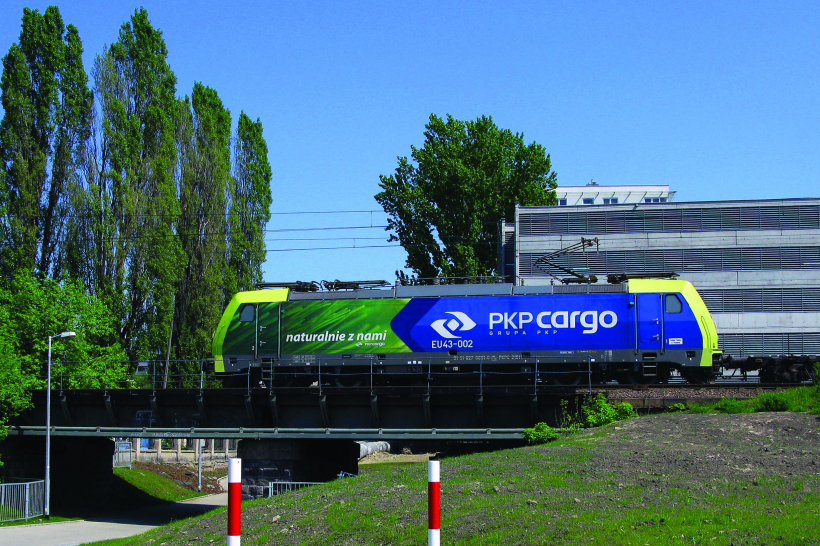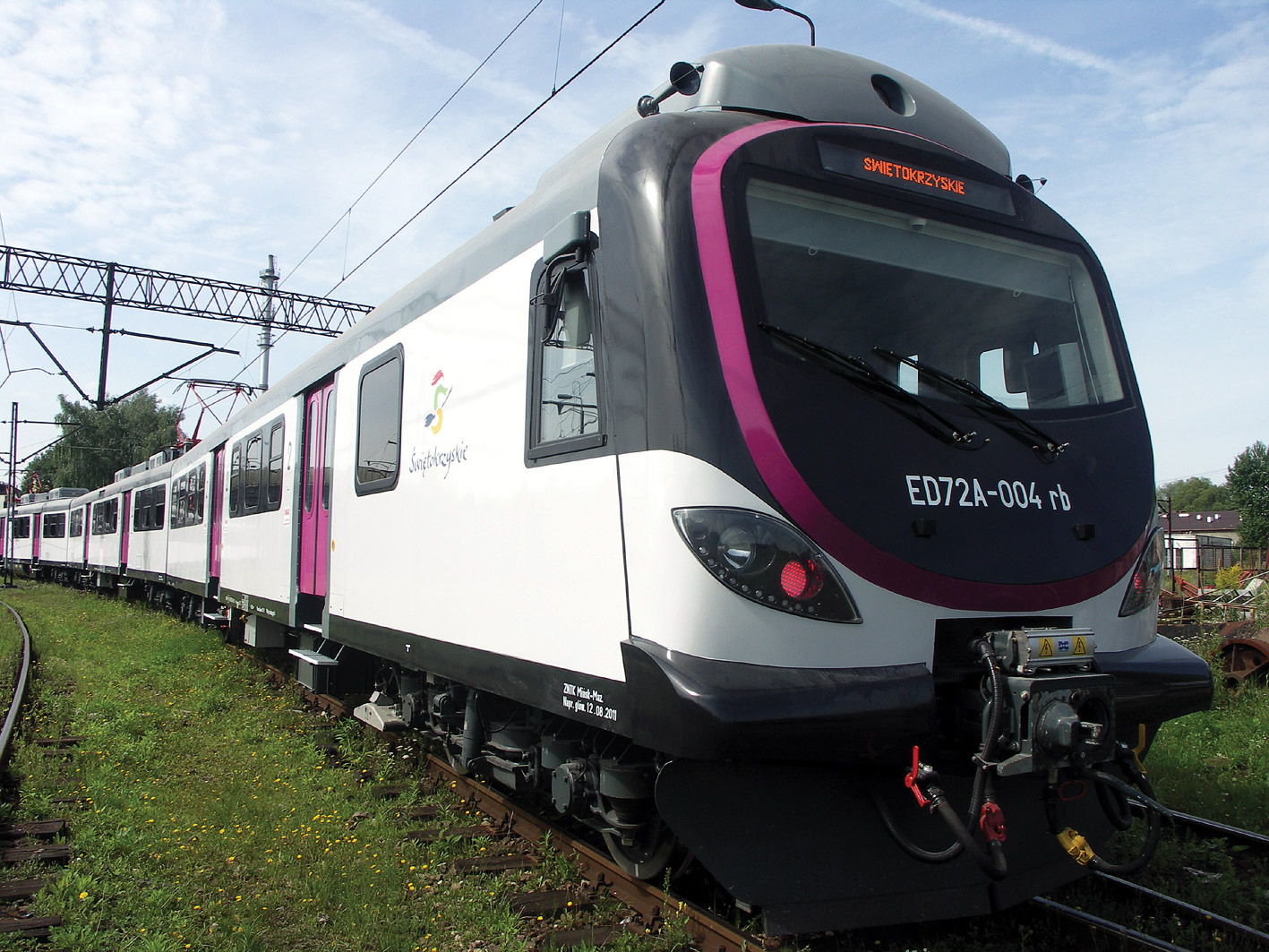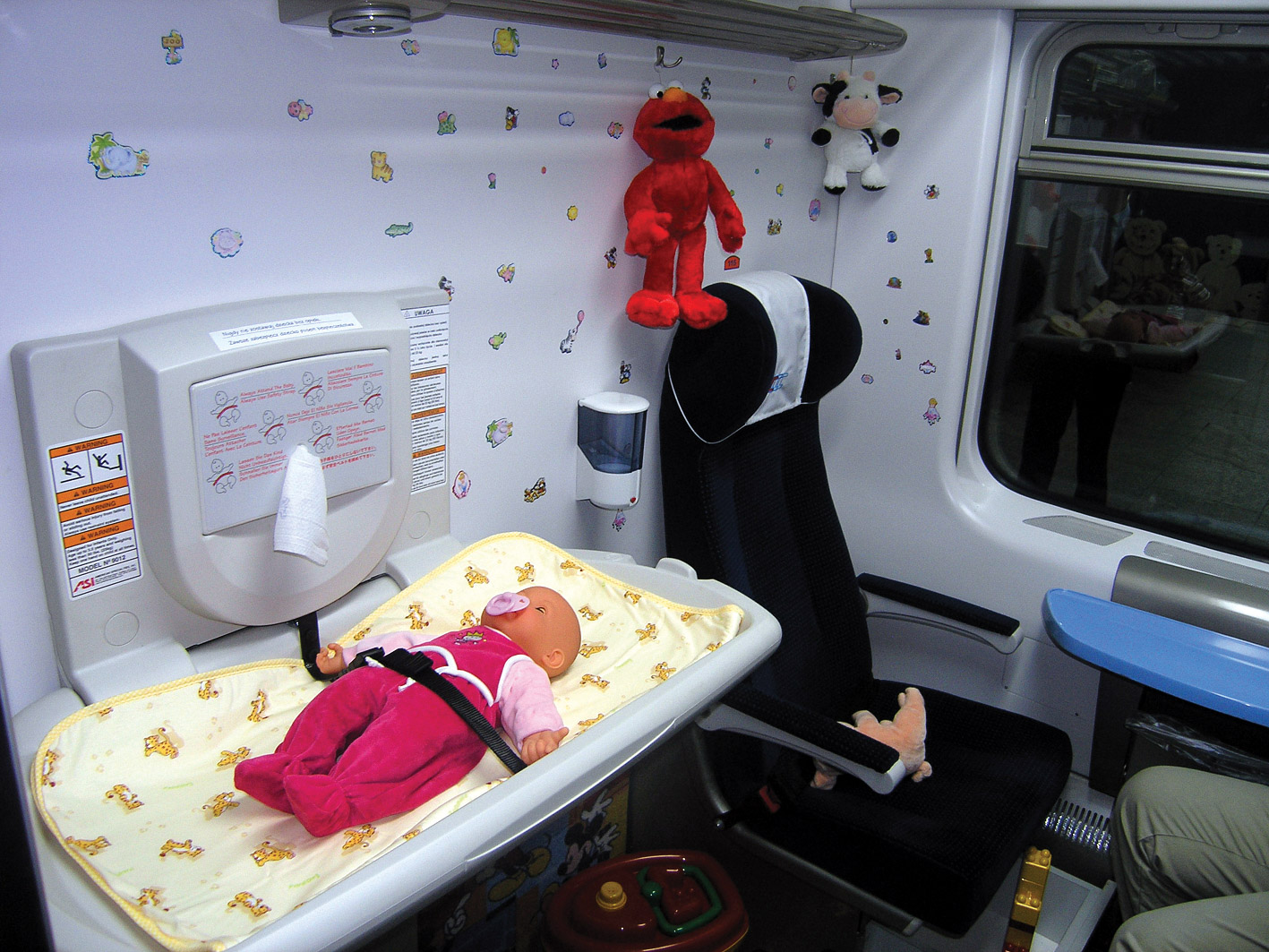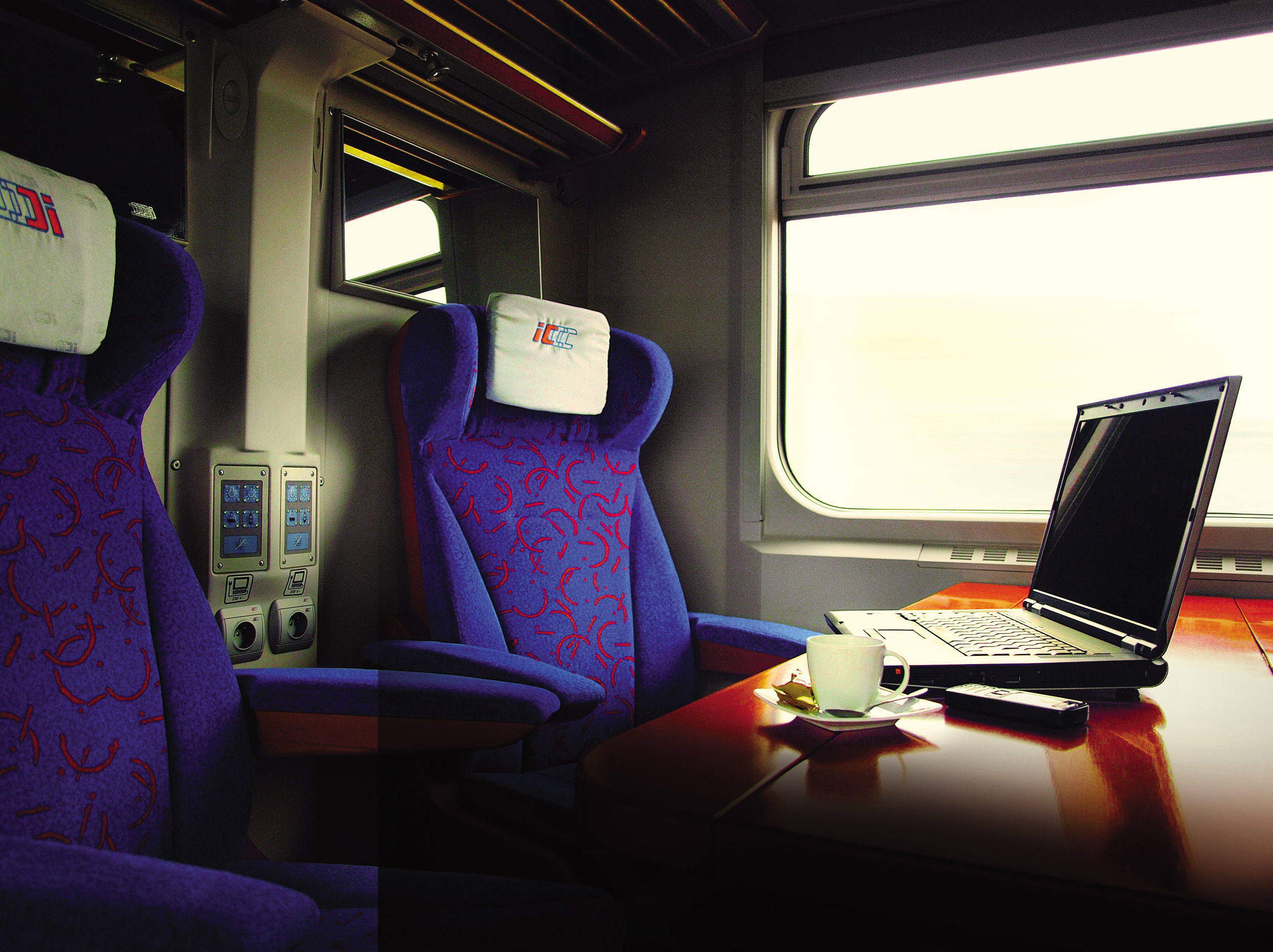
PKP Cargo freight train
History of railways
18 grudnia 2020

PKP Cargo freight train
Transformations of the socio-economic system in Poland after 1989, and a related rapid decline in rail transport, due to liquidation of many state-owned enterprises constituting the most numerous group of PKP customers, resulted in the reorganisation and restructuring of the country’s largest carrier. An idea for the railway sector in Poland was to transform the state-owned enterprise into a company. Was it a good idea? That is for the customers to judge.
Stopped investments, speed limits
PKP introduced subsequent permanent speed limits and decreased permissible axle loads. After 1990 investments in infrastructure stopped – except reconstruction works. The railway network in Poland shortened from 23 to 19 thousand kilometres, including 11 938 electrified kilometres (which ranked it 7th in the world, following Russia, Germany, France, Japan, India and China). Automatic block signalling was mounted on more than 2.6 thousand kilometres of lines, and semi-automatic block signalling on 14.3 thousand kilometres of lines. Today, more than 50% of locomotives owned by PKP are electric locomotives accounting for 87% of freight transport work and similarly for passenger transport. Although many trends were not very positive, at that time in the Polish railway sector there were also positive events. These certainly included launching the first EuroCity train on the route from Warsaw to Berlin (from 1992) and making five express trains (from Warsaw to Kraków, Gliwice and Poznań) InterCity trains.

The Rolling Stock Repair Workshop in Mińsk Mazowiecki - an ED72A electric multiple unit
Closing the lines
In 1991, the Act from 1989 was amended, which had transformed PKP into a state-owned enterprise. From the current PKP structures, technical support facilities were separated and transformed into stand-alone companies. Railway transport districts were liquidated and replaced with 102 district stations. Sales divisions for passenger and freight services were added to PKP’s organisational chart. Customs and operating agencies were established as well. As the number of passengers using PKP services was decreasing, some secondary line and narrow-gauge sections had to be closed. As the freight traffic on those lines was gradually coming to a standstill, the lines were first deactivated and ultimately closed altogether, which usually meant their physical removal. This happened mostly in western and north-western Poland, i.e. in locations where the network had been most dense before. While in the mid-1980s about 13% of active lines did not handle passenger transport, now the figure has exceeded 25%. This is the scale of the collapse.
Transformations of PKP
As no real concept existed for PKP financing, and no infrastructural investments were made, the depleted rolling stock and railway equipment reduced the service safety and quality. In July 1995, the Act on the Polish State Railways (PKP) came into effect, resulting in the establishment of the PKP Council and the PKP Management Board. After two years, the Sejm passed the Act on Railway Transport, which liquidated district directorates of the State railways as of 30 June 1998. They were replaced with the following sectors: traction and workshop facilities, railway infrastructure, passenger transport and freight transport, as well as the following divisions: real estate, electrical power engineering, power engineering, and job management services. Each of the divisions had its own directorate and contractor facilities. In 1999, the freight transport sector was split and the cargo sector was established as a separate entity.
PKP Group
The next step in the process of railway transformation took place pursuant to the Act of 8 September 2000 on Commercialisation, Restructuring and Privatisation of the Polish State Railways (PKP). According to the letter of the law, since 2001 PKP has been operating as a joint-stock company, whose sole shareholder is the State Treasury. The PKP Group was formed with 24 member companies, in which the parent company, i.e. PKP S.A. Nieruchomości holds a stake. Also, the parent company remained the owner of more than 3,200 railway station buildings and land. In several stages, PKP was divided into smaller carrier companies and technical back-up facilities. And so, on 1 July 2001, the following entities came to life: PKP Linia Hutnicza Szerokotorowa Sp. z o.o. (Broad Gauge Metallurgy Line) in Zamość, PKP Warszawska Kolej Dojazdowa (Warsaw Commuter Railway) in Grodzisk Mazowiecki, PKP Szybka Kolej Miejska (Fast Urban Railway) in Gdynia, a training centre in Warsaw and a repair and maintenance company in Wrocław. On 1 September 2001, the present joint stock company PKP Intercity S.A. (a limited liability company until 1 January 2008) and other four maintenance companies started to operate. In the third stage, on 1 October 2001, the following companies were set up: PKP Polskie Linie Kolejowe S.A. (infrastructure and its maintenance), PKP CARGO Sp. z o.o., PKP Przewozy Regionalne Sp. z o.o. (Regional Transport), PKP Energetyka Sp. z o.o. (Power Engineering), PKP Informatyka Sp. z o.o. (IT), Telekomunikacja Kolejowa (Railway Telecommunications) and the last six companies from the maintenance group in Kraków, Radom, Kielce, Gorzów Wielkopolski, Kluczbork and Szczecin. In 2001, PKP decided to withdraw from running the narrow-gauge traffic.

Modern, comfortable interiors of PKP Intercity trains: mother and baby compartment
In 2003, a new Act on Railway Transport provided the rules for the use, maintenance and management of infrastructure. PKP PLK S.A., which had previously made the railway lines available to four companies from the PKP Group companies and 18 carriers from outside of the Group, granted more than 70 transport licences, including 56 freight transport licences. As a result, they soon handled 46% of the freight weight and 16% of the transport activity.
The multitude of transformations and divisions into separate companies did not bring the expected results. On the contrary, it hampered the railway operations by dispersing responsibilities and areas of service, which was best evidenced by disputes between Intercity and Przewozy Regionalne (Regional Transport) concerning ticket receipts. As the service proposal was unattractive, especially for small customers, it contributed to the decrease in both the weight of transported goods and the number of railway passengers. The number of carriages in trains became smaller too. It was the railbuses that saved the day, as they were introduced to handle local traffic on secondary lines.
Modernisation of railway stations
In 2005 the companies decided to commence a long-term railway station modernisation programme. In the third millennium, post-socialist solutions – practically present everywhere – were already far from functional. The accession of Poland to European structures not only necessitated specific restructuring. Membership in the European Union was also connected with a supply of funds. Millions of Polish zlotys were allocated to modernisation of railway infrastructure. EU funding was used for modernising the railway stations in Warsaw, Gdynia, Poznań, Wrocław and other cities. Many major refurbishment projects were completed before 2012, when Poland hosted the European football championships. The new shape of old stations was not only attractive to travellers but also more intuitive, modern and adapted to the needs of physically disabled passengers.
On the international transport routes
As some Western European companies were interested in the improvement of rail transit across the Polish territory, several international agreements were signed. They have imposed on Poland an obligation to modernise and reconstruct selected lines with a total length of more than 3,107 miles (5,000 km), where trains could run with a nominal minimum speed of 100 mph (160 km/h) (passenger trains) and with a nominal minimum speed of 75 mph (120 km/h) (freight trains) with an increased authorised mass per axle of 22.5 tons, and on the proviso that combined transport terminals will be built on the lines covered by the AGTC (European Agreement on Important International Combined Transport Lines and Related Installations). The investments were co-financed from EU funds as part of the Trans-European Transport Network (TEN-T). The requirements specified in the agreements signed by Poland: the AGC (European Agreement on Main International Railway Lines) and the AGTC included some railway lines within the territory of Poland to East-West and North-South international transport routes. These projects were supplemented by modernisation and expansion of the Warsaw railway junction. The 2000s brought structural changes for the railways, yet they have not prevented subsequent line liquidations. The companies that have emerged from PKP operated in the new economic circumstances with varying success.
Railways of the future
In relation to past decades, recently an upward trend has been noticeable in the development of railway activity. PKP Cargo was awarded first foreign certificates of safety so it could enter foreign markets. At present, the trains of PKP Cargo can travel without major problems between Germany, Austria, Czech Republic, Slovakia, Romania, the Netherlands and Hungary. For the needs of the new Silk Road the company commenced cooperation with China and became a recognised player on the Warsaw Stock Exchange.
Another symbol of modern transformations is Pendolino. In 2014, twenty trains capable of travelling at speeds up to 250 km/h, purchased abroad, appeared on Polish tracks. Soon, they were joined by Darts and Flirts made in Poland. Network revitalisation works carried out on the routes connecting major Polish cities reduced train travelling time. In order to attract customers, companies from PKP Group started closer mutual cooperation. They introduced various types of vouchers and packages allowing passengers to travel on the means of transport operated by various carriers. The Foundation of PKP Group also started supporting the activity of railways. According to its mission, it promotes new technologies and propagates knowledge on the safe use of railway transport.

Modern, comfortable interiors of PKP Intercity trains: business class compartment
As forecasted, in the following years subsequent modernisation works will be carried out and new railway routes will be built. It is also planned that trains will be restored in many poviat capitals as one of the main means of transport. Will this happen? Time will show.